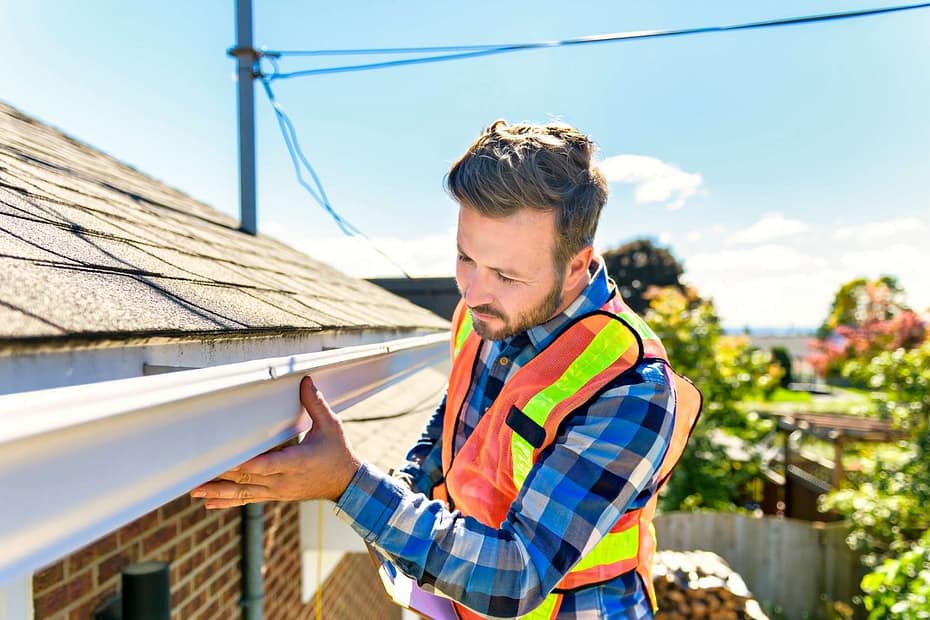Your roof has to withstand a lot of rain and snow each and every year. It also has to keep that moisture from getting into your house as well. But it can’t do that very important task without a proper drainage system installed. Even a sloped roof, which is meant for water to flow with the help of gravity, is not efficient either if the drainage is not the right one. That’s because water would then roll off the edges and gather at the basement level of the house which is not a good thing for a number of reasons.
Why is Proper Roof Drainage Important?
Standing water is one of the most dangerous affairs in a house as it comes with problems like leaking, and more problematic, flooding and accumulation of wetness within the house walls. Excess moisture can also drastically shorten the lifespan of your roof. But when your home has the right type of roof drainage, any water that would create problems is routed away from your home, keeping things dry. Roof drainage can roughly be divided into two, external roof drainage and internal roof drainage system. Both types of this system will be covered in this article.

Signs of Poor Roof Drainage
First though, you should be aware of the signs of poor roof drainage. If you notice any of these issues, it might be time to find a roofer to come out and have a look to ensure the water that falls on your roof has a way of draining in order to prevent damage to your home (like dipping or depressed areas on your roof). Here are some common signs of poor roof drainage.
- Water gushing over the gutters
- Soil/mulch erosion
- Water pooling around the foundation
- Mildew smell in the attic
- Moisture buildup in the attic
- Water pouring out of the downspouts
- Water stains in the basement or along the basement walls
- Cracks in your home’s foundation
Types of Roof Drainage Systems
Four common types of roof drainage systems for residential homes are noted below. The first can be used on a sloped roof, while the other three methods are more often used in building having flat roofs. A flat roof poses a special challenge to the question of roof drainage, so the problem of the efficient and timely removal of water from this type of roof requires a lot of thought.
Gutters
If your roof has any pitch to it at all, it’s likely that the only type of roof drainage you’ll need is conventional gutters. These are the long pieces that connect to the edge of your roof along the length and lead into downspouts. Gutters are an effective roof drainage system that catch all the water that runs off your roof and direct it into downspouts to move it away from your home’s siding and foundation.
In order to keep your gutters working as efficiently as possible, it’s a good idea to clean them out yearly, removing debris and buildup. Typically, this maintenance job requires only a ladder and a garden hose. But gutters that have gone years without maintenance sometimes require a more extensive clean out, since plants and even tree saplings can start to take root. In this case, you may need to contact a roofing professional to help with.

Scuppers
A great drainage option for flat roofs, scuppers are essentially holes in the side of the roof that allow water to drain directly off the roof. Most often lined with metal or plastic flashing to prevent water from damaging the area around the scupper, these types of roof drainage can be very effective, and often connect to a downspout similar to how a gutter would function on a sloped roof.
Inner Drain
There are two main types of roof drainage systems: exterior drainage, where the water exits the roof via an outside drainage system, and interior drainage. An inner drain, logically, is an interior roof drainage system. Here, a small drain is placed on the roof, typically in a lower-lying area. Water that enters the drain is filtered down into an interior pipe that removes it from the roof. This clever drainage type is aesthetically pleasing, as it requires no outside gutters or downspouts. However, it’s best suited to a flat roof, and does require some routine maintenance to ensure the pipes stay clear of debris.
Siphonic Drain
The siphonic drain can be described as a rough inner drain in terms of construction details. Functionally, however, the two types of roof drainage systems are very different. An inner drain would work as where water would flow into it due to the pull of gravity, whereas a siphonic drain would work in reverse where a negative pressure is used to suck the water down into the drain. As such, it does get rid of water faster than a plain inner drain system relying only on gravity
Siphonic drain systems may be more effective, but such systems are not easy to come up with, especially the plans and execution. For instance, correct average precipitation amounts should be included if such a system is to be properly designed and installed, which many homeowners might find to be an unnecessary complication, especially when there are other roof drainage types that are far simpler to install and use.
Fact Checked by Christin Perry 9/20/24

